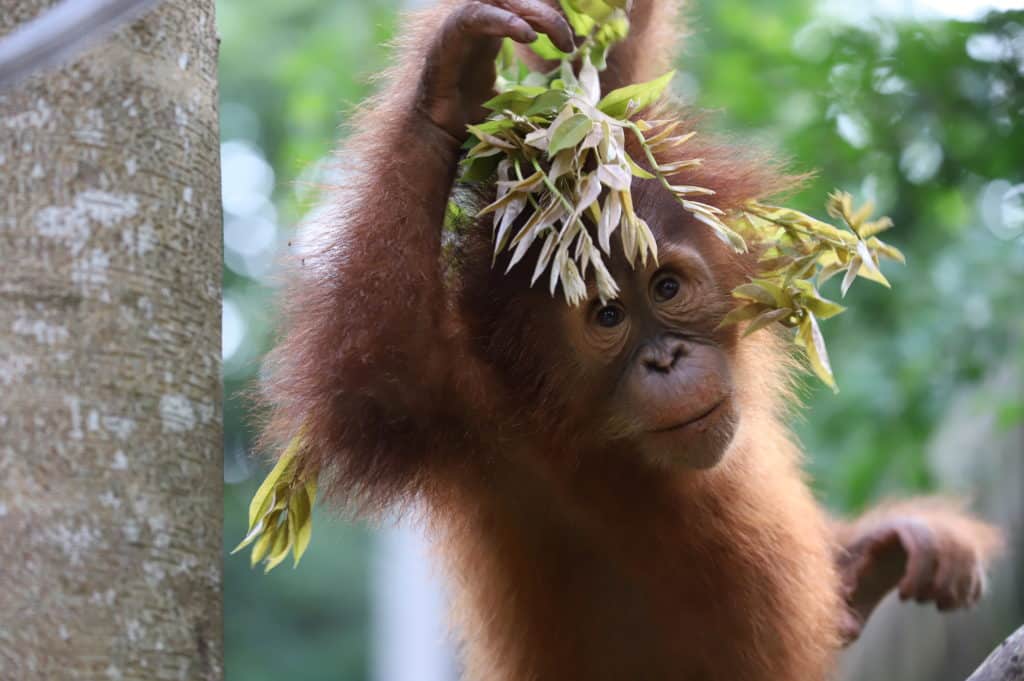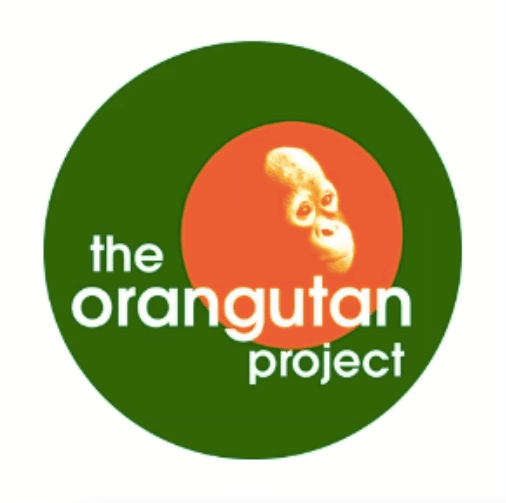This Orangutan Caring Week, which runs from 13 to 19 November, we focus on how we can turn our compassion for orangutans into positive action that will change the world for them. It’s not enough to care from afar. The only way to save these highly intelligent beings from extinction is to be part of the solution – to turn that caring into action.
—
This article was written by Leif Cocks
Without the care and compassion of people all over the world, orangutans may lose the fight against extinction in less than ten years. The multiple threats they face mean that only one in six is estimated to be rescued from captivity and the illegal wildlife trade.
Orangutans are the most intelligent beings on the planet – after humans. They are known to create and use tools, communicate with each other through a wide range of sounds and gestures, and are believed to carry a map of the forest in their minds.
Orangutans are self-aware, highly sentient, and estimated to be as intelligent as a six-year-old human child. In a recent Smithsonian article, scientists described witnessing orangutan mothers communicating about the past to their babies. This research demonstrates an extraordinary level of intelligence, so the trauma orangutans experience at the hands of wildlife traffickers is heartbreaking to imagine.
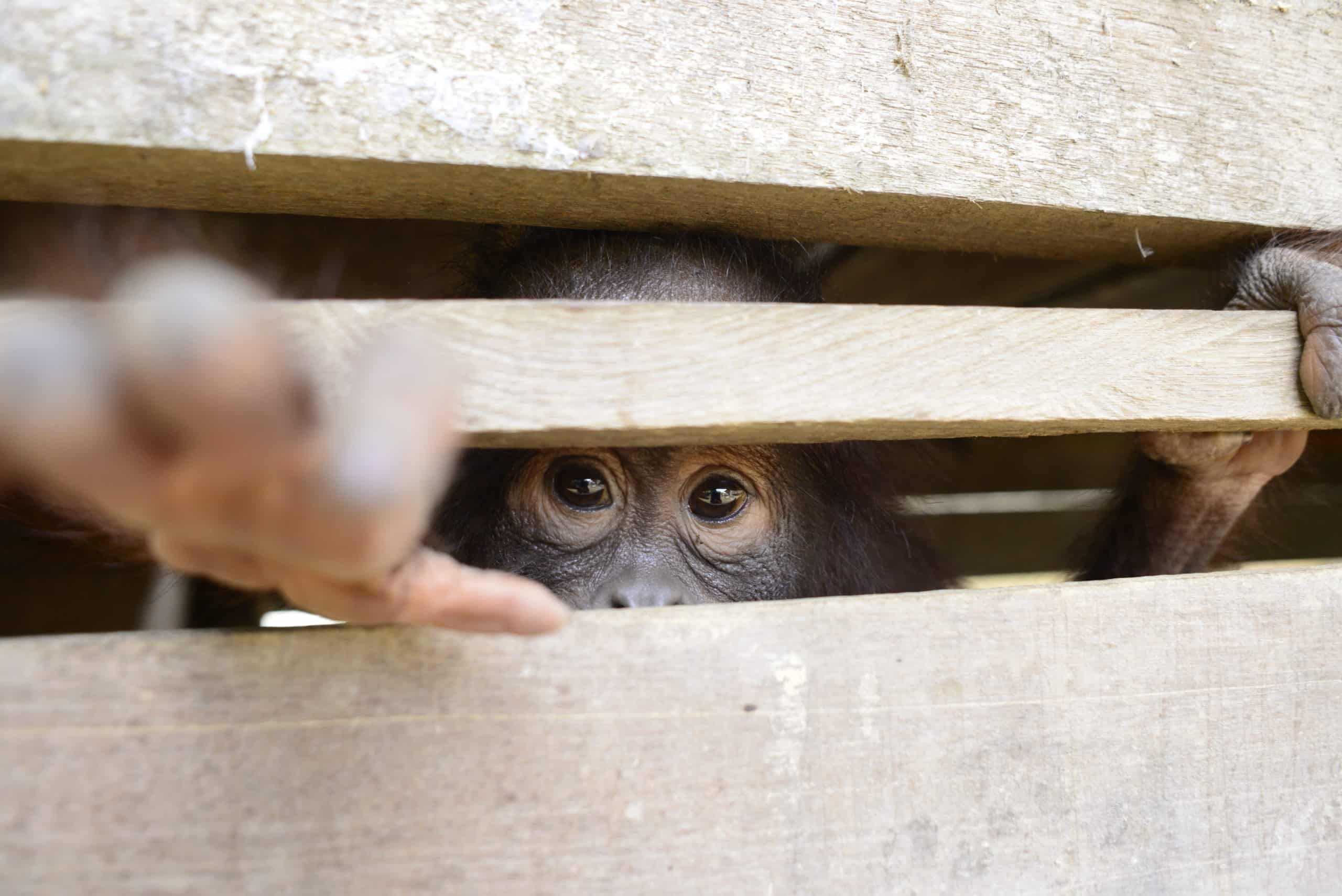
Aman was rescued from a chicken coop in 2020. Photo: Bornean Orangutan Rescue Alliance.
Orangutans can’t speak to us in words we can understand, but if they did, what would they say about the experience of being torn from their mothers’ arms? What words would they use to describe what it’s like to see their mothers killed in front of them? What would they tell us about how they felt when they were shoved into cages, taken far from the freedom and green of their forest, transported through noisy concrete cities, and locked into dark, wooden boxes?
It’s not hard to imagine the words they’d use. And it’s not hard to imagine the suffering they experience, when you look into the eyes of a rescued orangutan – even if those eyes are only in a photo.
This Orangutan Caring Week we focus on how we can turn our compassion for orangutans into positive action that will change the world for them. It’s not enough to care from afar. The only way to save these highly intelligent beings from extinction is to be part of the solution – to turn that caring into action.
You might also like: 11 Fascinating Facts About Orangutans
Orangutan Caring Week In 4 Steps
Step 1: Caring
The first step in saving orangutans from extinction is to rescue those who are held illegally in captivity. Although it is illegal in Indonesia to have orangutans as pets, it is still common practice.
Baby orangutans are taken from their mothers, who are often killed as agricultural pests. The babies are then sold to the highest bidder. When they’re young, they’re easily controlled, but as they grow older, orangutans become stronger and much harder to control. Some are then chained to posts to stop them escaping, while others are relegated to chicken coops, boxes or cages.
Orangutan rescues often take place in response to local community members who contact rescue organisations or the Indonesian Ministry of Forestry and Environment to report a captive orangutan. Local communities showing care and compassion is the first step.
The Orangutan Project is the world’s largest orangutan conservation organisation, as they support, fund or partner with the majority of conservation projects operating on the ground in Borneo and Sumatra. According to their recent Impact Report, The Orangutan Project, their partners, and the rescue organisations they support rescued nine orangutans in the past Financial Year.
At the start of 2021, two tiny babies were rescued from a terrible fate. Sudin and Siti were eighteen months old, and were rescued just as they were about to be loaded onto a ferry and transported far from their homeland of Sumatra. They are now at the Sumatran Orangutan Reintroduction Centre in the Bukit Tigapuluh (BTP) Ecosystem, supported by The Orangutan Project and their partner Frankfurt Zoological Society in partnership with the Ministry of Forestry and Environment.
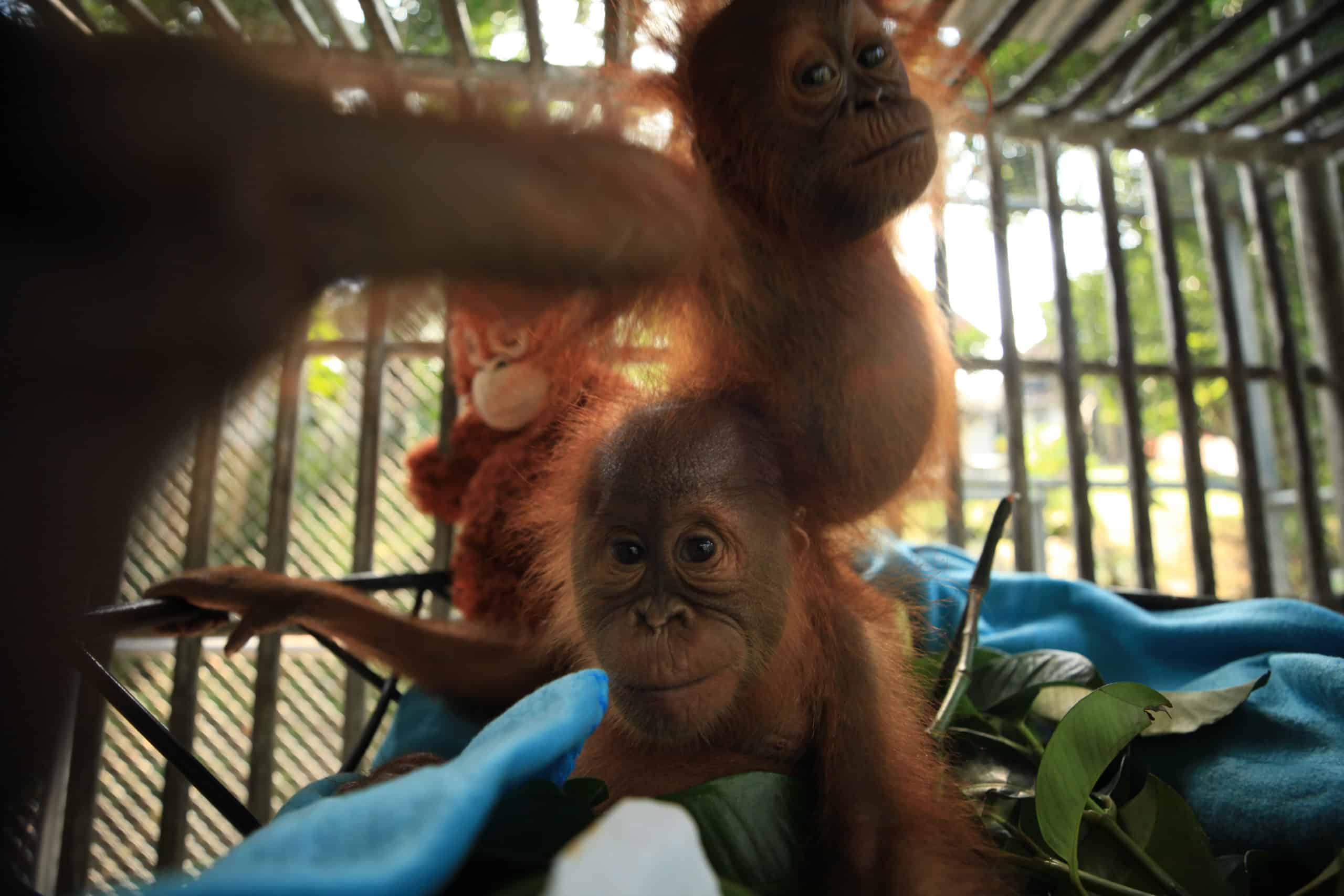
Siti reaches for the camera while Sudin looks on, soon after their rescue. Photo: Frankfurt Zoological Society and Ministry of Forestry and Environment.
Step 2: Providing Medical Care
Once an orangutan is rescued, the next stage is to provide medical care, as orphans are often unwell, dehydrated and malnourished when they arrive at a rescue centre. In captivity, they can also catch human diseases such as hepatitis, tuberculosis or COVID-19 from humans, as well as develop illnesses such as gastroenteritis and bronchitis. The veterinarians who care for them are the next step in their journey from captivity to freedom.
When they were first rescued, Sudin was diagnosed with an inflammatory bowel disease, while Siti was found to be suffering from bronchitis. The veterinarians got to work straight away to provide them with medicine and the care and compassion they needed to recover. Once they were on the mend, these tiny orangutans started to move around more vigorously and developed strong appetites.
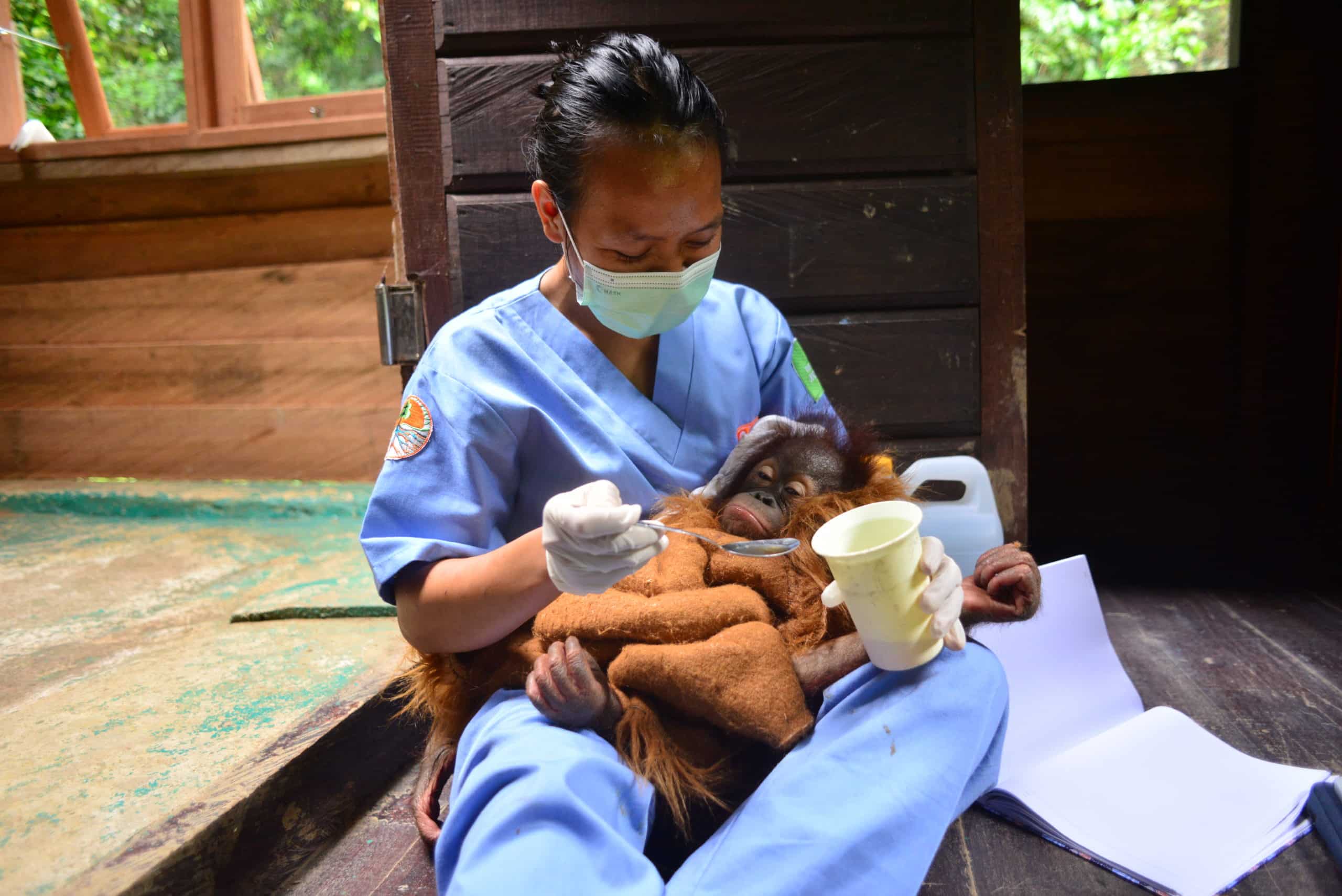
Jainul, who was rescued in 2021 by the BORA team, receives medical care from Tata, the veterinarian at their rescue centre. Photo: Bornean Orangutan Rescue Alliance.
Step 3: Meet the Orangutan Carers
Once orphaned orangutans are well enough to leave their quarantine enclosures, orangutan carers step in to provide them with food, take them to Jungle School, and hold them close when they’re scared. These carers then become the closest thing vulnerable young orangutans have to a mother. Although they are patient, kind and nurturing, a human carer can never fully replace the love, teaching and connection they received from their mothers.
Depending on the age and mental and physical condition of an orangutan when it is rescued, some may need to stay in care for up to eight years, the length they would normally stay with their mothers in the wild. They will only be released into the forest once their carers are sure they can fend for themselves.
Little Sudin has a favourite carer – Riris Prawesti, a veterinarian who cared for him from the day he arrived at the reintroduction centre. One of the key ways Riris cares for Sudin and Siti is by teaching them the skills and knowledge they need to survive in the wild. Orangutans learn through cultural transfer, as opposed to surviving by instinct. Like humans, other Great Apes, and animals including elephants and whales, they transfer survival knowledge through teaching.
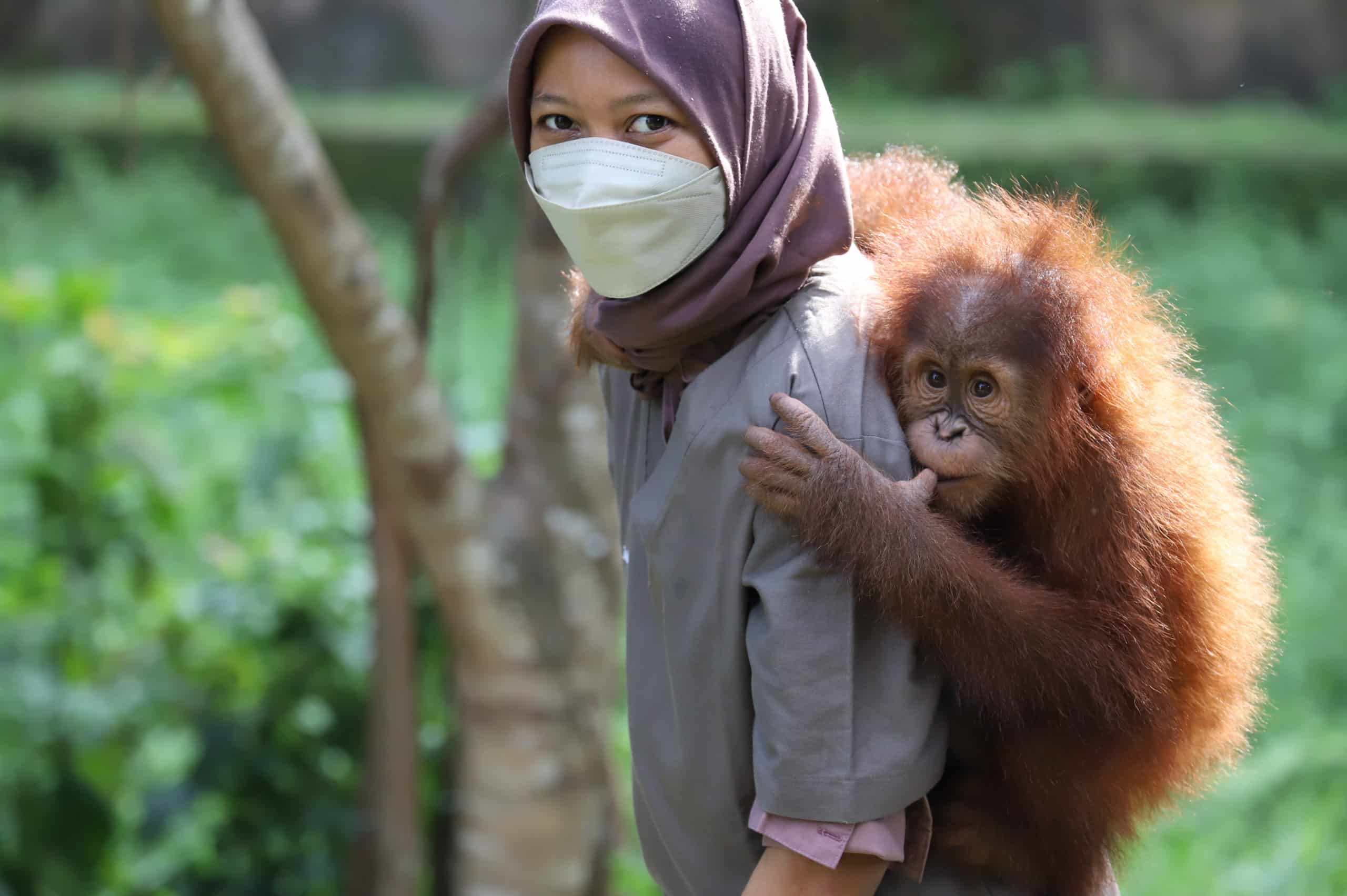
Riris carrying Sudin to Jungle School in the Sumatran Orangutan Reintroduction Centre. Photo: Frankfurt Zoological Society and Ministry of Forestry and Environment.
Orangutan mothers teach their young how to climb, how to use saplings to swing through the trees, how to use sticks to dig holes for termites, and how to strip bark from tree trunks to reach the nutritious cambium underneath. They teach their babies how to drink water from leaves, how to avoid predators on the ground, and how to make a nest in the trees.
Every evening, orangutans make new nests, bending small branches into a pile, adding leaves, and creating a soft and comfortable nest for sleeping high in the trees. As arboreal apes, they live primarily in the trees, avoiding the ground. Before an orphaned orangutan can be returned to the wild, it must prove that it can make a nest, and this is often one of the last skills that orphaned orangutans master.
Carers teach these and many more skills to orangutans every day of their lives in the rescue centres and in Jungle School. Sometimes an orangutan takes to these new skills with energy and flair, surprising their carers with their quick development. Other orangutans take longer to learn and develop the confidence they need to explore the forest.
Each orangutan carries different memories from its time before the rescue centre. Some retain skills they started to learn from their mother before they were stolen. Some still remember the trauma of seeing their mother killed in front of them. Some miss the cuddles and comfort their mother provided. Regardless of their past, it’s their present and the future that the carers are focused on, supporting their development one day at a time.
Step 4: Return to the Wild
Finally, when an orangutan has learned all the skills it needs for survival, and has demonstrated it can use those skills again and again, the carers know the orangutan is ready to return to the wild. Sudin is a long way from being ready for this, as he’s still mastering climbing, swinging, and fruit foraging. He still clings to Riris when he and Siti head out from their enclosure to Jungle School.
But for orangutans like Nigel, Hercules and Antak, freedom is already here. These three handsome alpha males have long red coats, dramatic flanges (cheekpads), and the strength an adult male needs. As Bornean males, they are among the largest orangutans on the planet.
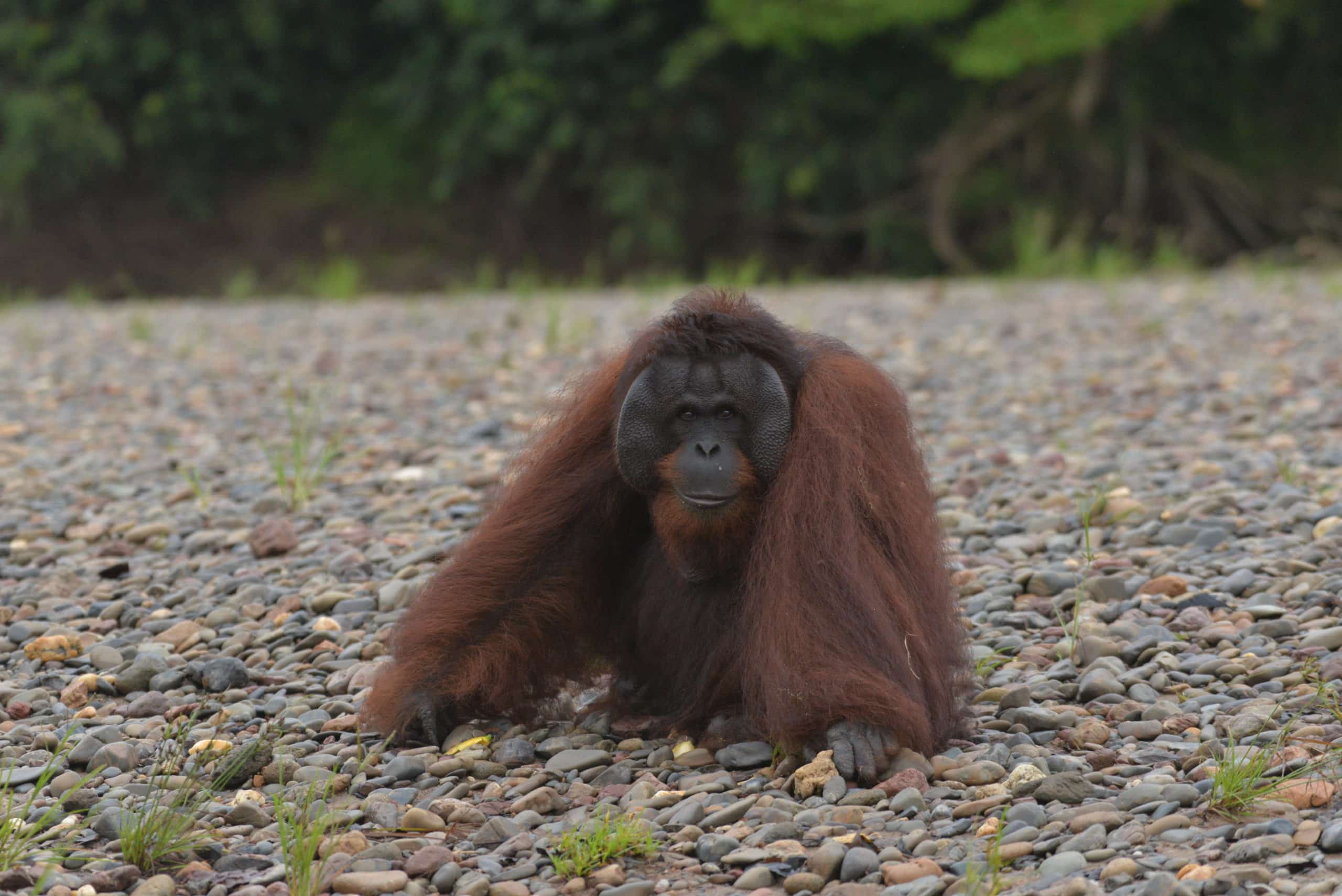
Antak soon after his release into the Busang Ecosystem. Photo: Bornean Orangutan Rescue Alliance.
These three orangutans were rescued together over ten years ago, taken from a dilapidated zoo where they’d been squeezed into a small cage and poked and prodded by the public. When they were rescued, they were hairless and hungry, suffering from malnutrition and neglect.
For many years, just like Sudin and Siti are doing now, the trio developed their skills in the rescue centre run by The Orangutan Project’s partner. Finally, after the Indonesian Ministry of Forestry granted the Bornean Orangutan Rescue Alliance 20,000 hectares for orangutan release, the handsome three were able to return to the wild.
The forest they now roam within is the 260,000-hectare Busang Ecosystem in East Kalimantan, habitat for approximately 620 orangutans. As well as freedom for these individuals, their releases also represent hope for their entire species. These three magnificent males now have the chance to sire wild offspring and provide new hope for their species.
Every rescued orangutan experiences new hope and the chance for a better life. Every orangutan cared for and nurtured back to health is another sentient being who deserves to feel loved, protected and safe. Every orangutan released to the wild is hope for their entire species.
What Can You Do This Orangutan Caring Week?
Adopting an orangutan like Sudin is the best way to become an orangutan carer, to be part of Orangutan Caring Week in a deeply meaningful way. Over time, you’ll be part of this little soul’s life, know that you’re helping him and his species to recover, and you’ll be turning your care and compassion into tangible action.
If you want to learn more about this Orangutan Caring Week, visit this page.
Featured Image: Frankfurt Zoological Society and Ministry of Forestry and Environment.
You might also like: Can We Save the Orangutan?








